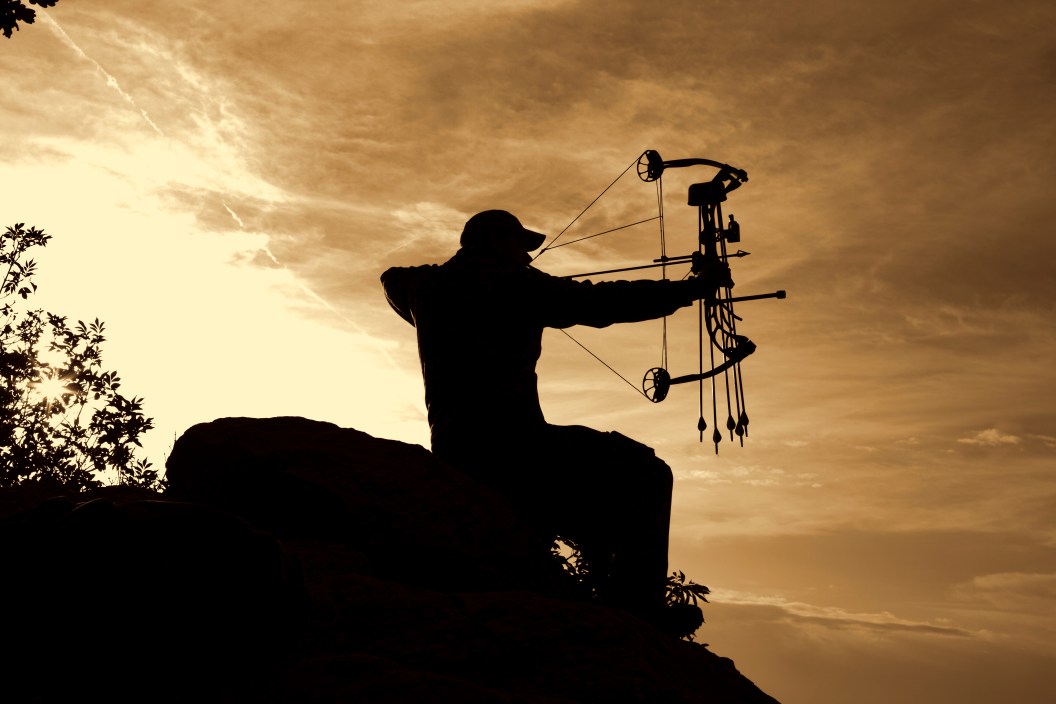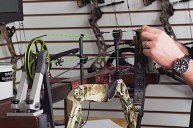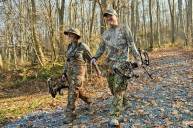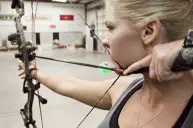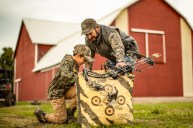Every year around this time, archery hunters pull their bows from storage with great anticipation and excitement. Some figure all they need to do before whitetail season starts is hit the archery range. In reality, there is a lot more to getting your bow ready.
It's not just about making sure your bow can make an accurate shot when the time comes. Bowhunters also need to ensure their bow (and other vital bowhunting gear) is in good shape mechanically.
Follow this checklist (and a short guide on what I call "Perfect Practice") to ensure your bow is ready for deer season before you even hit the range to practice. With a little bit of preparation, your equipment will perform to its full potential when you need it most. And so will you.
1. Do A Physical Equipment Check
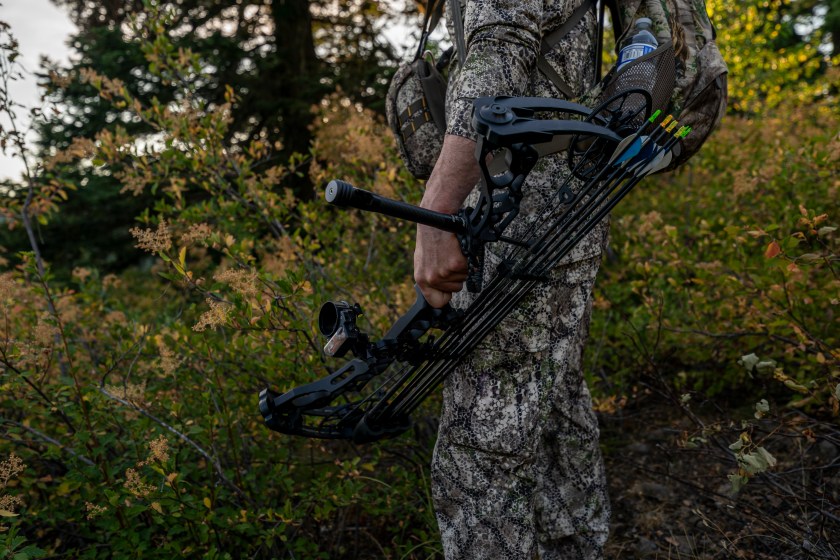
Getty Images, Fly View Productions
Before you even draw your bow, you should complete a physical equipment check. This inspection will ensure your bow is still working properly—and make sure nothing breaks while you're shooting, which can cause serious injury.
Here is a simple checklist to go through before drawing your bow for the first time this season (pro tip: download the PDF version and store it with your bow):
- Strings and Cables: Check your bow string and cables for wear, breaks, and frays. If these are in poor condition, they may break, which can cause serious injuries. Especially before the first shot of the season, it's a good idea to wax your bow string.
- D-Loop: Make sure your D-loop is tied tight and it is in good condition, free of breaks and frays. If your D-loop is damaged, like the string and cables, it may end up breaking at the worst of times.
- Cams: Visually inspect the cams of your bow to ensure there are no nicks or cracks. Damaged cams can cause the string to roll off. Make sure to also check where your bow string loops into the cams—a common place for fraying.
- Limbs: Look at the bow's limbs for cracks, splintering, and bubbling. If you spot anything abnormal on this front, you should have your bow checked by a professional.
- Screws: Snug all the screws on your bow—especially those that hold the sight, rest, and quiver—with the right-sized wrench. Loose screws will increase the noise of your bow and may throw off arrow flight or your sights.
- Arrows: Shooting a broken arrow poses a serious threat to your safety. Check arrows for straightness and damage, especially where the insert is attached. Some arrows, specifically full metal jacket arrows, may bend, causing flight issues.
- Nocks and Fletching: All nocks should be checked for cracks and breaks, and fletching checked for rips and wrinkles. The fletching is what stabilizes the arrow; if it is in bad shape, your arrow's flight will not be true. Refletching an arrow may take a little time, but it is well worth it.
- Broadheads: You should never shoot the same broadhead arrow twice unless it's been resharpened. As such, any expandable or fixed blade heads must be checked for sharpness. Replace any damaged or dull blades or change out the broadhead entirely if sharpening isn't an option.
- Release: Open and close your release to ensure that it works smoothly, and tighten any screws that may have loosened up.
Don't just inspect everything before the season and wait until next year to do it again. Instead, make this part of your daily checklist before you head to the woods.
2. Wax Your Bow String
Bow string wax protects against moisture, which can infiltrate the fibers of your string and decrease its lifespan. A properly waxed string looks smooth and has a slight tacky feeling. Spend a few dollars on a tube of wax (I like Bohning 1306 Tex-Tite Bowstring Wax) and you'll save hundreds in bow string replacements.
3. Check Your Bow's Timing
Proper "cam timing" means the cams of your bow rotate in synchronized fashion when you shoot. On a two-cam bow, this means both cams roll over at the same time; on a solocam bow, proper cam timing means the cam is in proper position at full draw.
Drop-away rests are extremely common these days and also should be checked for timing. A perfectly-timed rest is one that is:
- Fully up when you come to full draw
- Drops away before contact when the arrow is released
You can check and adjust the timing of your cams and rests yourself, but I highly recommend having a reputable archery shop do this for you instead. Getting your bow out of storage early helps you avoid long lines and wait times at the archery shop.
4. Tune Your Setup
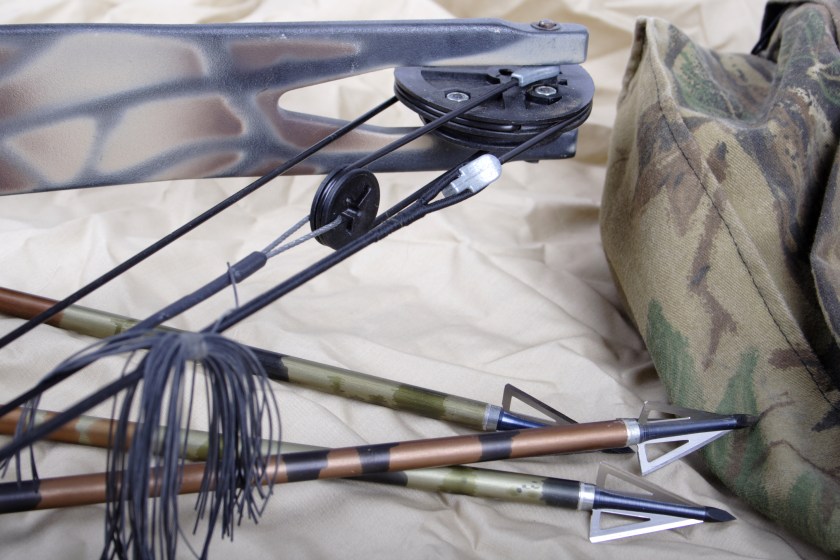
Getty Images, rmfox
Tuning your bow and broadhead setup ensures an arrow flies true, hits its mark, and penetrates deeply for a clean kill.
So, how do you tune your bow setup? The best method is known as "paper tuning." Though it may seem like an old-fashioned way of doing things, paper tuning is an easy and extremely effective way to tell if your arrow is leaving your bow properly. In short, you'll be firing an arrow from close range through a sheet of paper and into a target behind, noting whether its flight creates a clean "bullet hole." This "bullet hole" indicates your bow is properly aligned and that your arrow rest, nocking point, string, hand grip, form, and choice of arrows are all tuned in.
Here's how:
- Set up a piece of paper in a picture-frame-type stand.
- Next, set up a target more than an arrow's length behind the paper as a backstop.
- Screw on a field tip that's the same grain as the broadhead you will be using.
- Shoot the paper from two to three yards away.
Now, look at the hole your arrow left in the paper. A perfect "bullet hole" will be clean and symmetrical, with a few tears from your arrow's fletchings. This indicates an arrow flying straight.
If you get a good hole from a field point, shoot a broadhead at the same target. If both arrows impact the same spot on the target, your bow is ready to sight in.
If the hole in the paper is ragged or torn, adjustments will need to be made to your nocking point or rest, arrow spine, or timing of the bow. Consult one of the many paper tuning adjustment diagrams available online or your local archery shop to assist in making the correct adjustments.
5. Take Your Practice Into the Woods
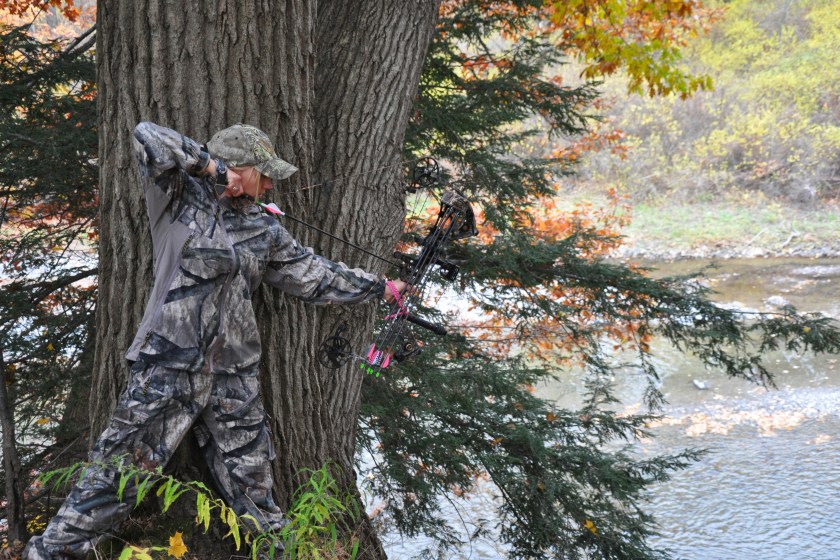
Make sure you practice shooting your bow in real-world situations to improve as an archer. | Getty Images, DLCcreates
It's one thing to carry a physically-sound, timed, and tuned bow into the field. It's another to be comfortable shooting it.
We've all heard "practice makes perfect," but I believe that in bow hunting perfect practice makes perfect. Shooting all summer at the same target set, at the same range doesn't necessarily translate to accuracy in the woods.
Instead, practice the way you'll shoot while out bowhunting:
- Get up in a treestand, lean against a tree on a prime saddle, or sit in a ground blind.
- Practice quartering shots, different angles, random ranges, and various lengths of hold times.
- Keep practicing once you're physically exhausted to keep it realistic.
In the woods, you'll be presented with many other variable, so I also recommend practicing:
- Shooting at random ranges. You'll rarely know the exact distance a deer is walking by. Throw a target out, guess the range, and make the shot. This will build confidence in ranging a target with your eyes when the action is moving fast.
- Holding a full draw for 1-2 minutes, then shooting. This will simulate waiting for a deer to present a shot.
- A quick draw and release. On the flip side, quick shots may also happen, say when a buck is chasing a doe in the rut. Practice a quick draw and release on your target, too.
- Shooting beyond your comfortable range, whether that's 20 yards or 60. It's the only way to stretch your range and still make a perfect shot. Plus, the mental focus and control this type of practice encourages will make you more proficient on shorter-range shots, too.
READ MORE: How to Manage Your Breathing While Bowhunting
